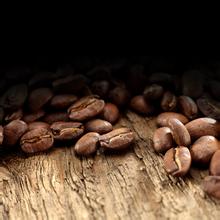Description of flavor of Brazilian Minas coffee beans introduction to the method of regional treatment of varieties produced by grinding scale
Description of flavor of Brazilian Minas coffee beans introduction to the method of regional treatment of varieties produced by grinding scale
Coffee was first introduced to Brazil in the early 18th century. In 1727, the Brazilian government sent a personable army officer to secretly bring coffee seeds from French Gaiana to Brazil on the pretext of mediating border disputes. It is said that the governor's wife of French Gayana was so fascinated by the officer that she secretly brought coffee tree seeds to him at a farewell dinner party. At present, 2 million hectares of land in Brazil is used to grow coffee, and the largest is Arabica. These beans will eventually be sent to large bakers in various countries, also known as Santos (in the name of the port of export santos, not the producing area).
It is said that the governor's wife of French Gayana was so fascinated by the officer at that time that she secretly brought coffee tree seeds to him at a farewell dinner. At present, 2 million hectares of land in Brazil is used to grow coffee, and the largest is Arabica. These beans will eventually be sent to the hands of large bakers in various countries, known as Santos (in the name of the port of export santos). The quality of coffee beans produced in the high-altitude regions of the south has been appreciated because of the coffee competition in the south after 2000, mainly by the farms around the Minas platform, and the coffee quality is also the largest among Brazilian beans, such as Sirado in the west of Minas and Matas in the east, Bashiya in the north or small farms in the south, Minas has almost become synonymous with Brazilian fine coffee. In recent years, the coffee competition is accurate to be separated by treatment (water treatment / half-washing / half-sun / sun-drying), which has developed a variety of flavors, taste and finish, which is quite different from traditional Brazilian coffee. In particular, the half-sun method and the sun method perform best, the aroma of clean and low-acid fruit increases, so that the rich chocolate flavor reduces the farm coffee without machine harvest, and the fully ripe coffee beans are picked by hand, with citrus and fruit tea aromas. the wet aroma is with the fragrance of black tea, showing the elegant aroma of jasmine and herbal tea, while the aftertaste is full of oolong tea. It tastes very fresh and gentle, which is a rare surprise among Brazilian beans.

Important Notice :
前街咖啡 FrontStreet Coffee has moved to new addredd:
FrontStreet Coffee Address: 315,Donghua East Road,GuangZhou
Tel:020 38364473
- Prev

Flavor description of Mantenin Coffee Bean growing area in Indonesia
During the Japanese occupation of Indonesia during World War II, a Japanese soldier drank mellow coffee in a cafe, so he asked the shopkeeper the name of the coffee. the boss mistakenly thought he was asking where you are from, so he replied: Mandaining. After the war, the Japanese soldiers recalled the manning they had drunk in Indonesia. So Tuo
- Next

Introduction of Mantenin and Yunnan small Coffee beans how to brew Flavor description and taste characteristics
Manning and Yunnan small-grain coffee beans describe the taste characteristics of coffee quality is determined by the growing environment, climate, cultivation and management techniques and other factors. Its best growing environment is low latitude, high altitude, sufficient rainfall and suitable sunshine, so the north latitude is 15. The ideal growing area for coffee is between the Tropic of Cancer and the Tropic of Cancer. But in other parts of this zone, Rumi
Related
- Detailed explanation of Jadeite planting Land in Panamanian Jadeite Manor introduction to the grading system of Jadeite competitive bidding, Red bid, Green bid and Rose Summer
- Story of Coffee planting in Brenka region of Costa Rica Stonehenge Manor anaerobic heavy honey treatment of flavor mouth
- What's on the barrel of Blue Mountain Coffee beans?
- Can American coffee also pull flowers? How to use hot American style to pull out a good-looking pattern?
- Can you make a cold extract with coffee beans? What is the right proportion for cold-extracted coffee formula?
- Indonesian PWN Gold Mandrine Coffee Origin Features Flavor How to Chong? Mandolin coffee is American.
- A brief introduction to the flavor characteristics of Brazilian yellow bourbon coffee beans
- What is the effect of different water quality on the flavor of cold-extracted coffee? What kind of water is best for brewing coffee?
- Why do you think of Rose Summer whenever you mention Panamanian coffee?
- Introduction to the characteristics of authentic blue mountain coffee bean producing areas? What is the CIB Coffee Authority in Jamaica?

